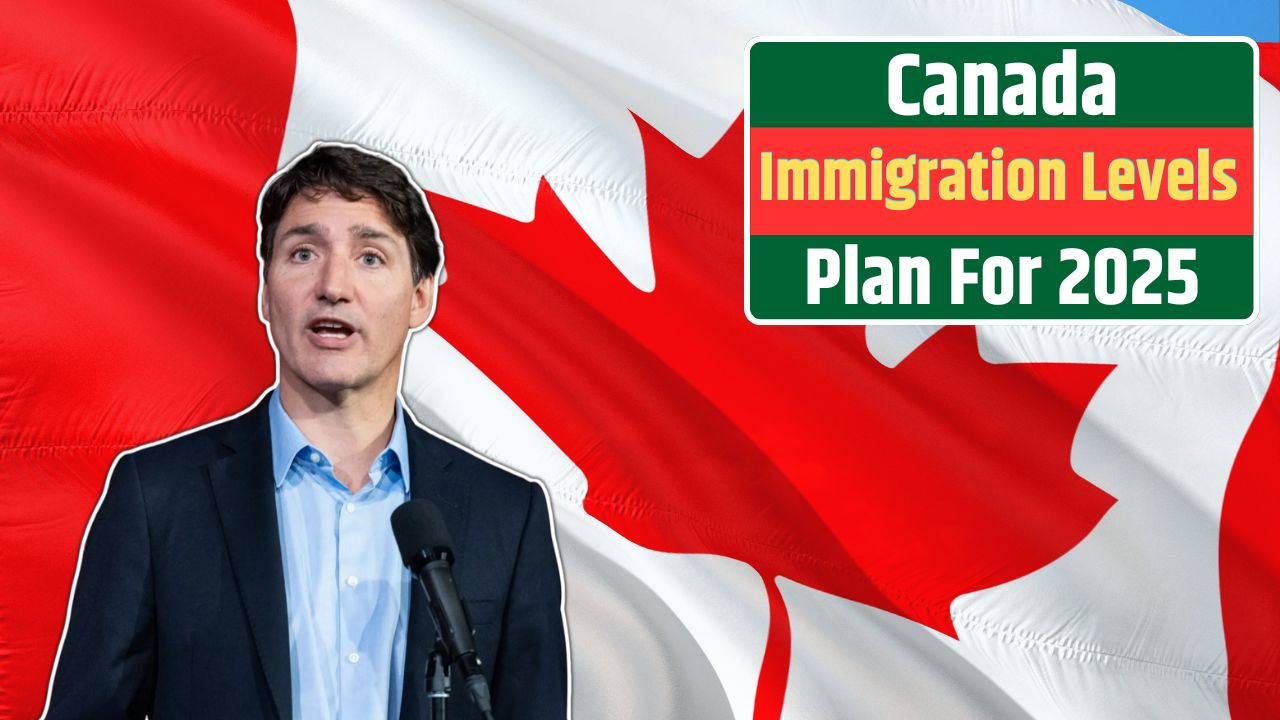Canada’s New Immigration Levels Plan for 2025-2027 outlines ambitious targets for welcoming permanent and temporary residents.
With a focus on skilled workers, family reunification, and Francophone immigrants, the plan aims to address labour shortages, support economic growth, and foster cultural diversity.
If you’re considering immigrating to Canada, understanding these changes is essential to navigating the process successfully.
Key Highlights of the Immigration Plan
| Category | 2025 Target | 2026 Target | 2027 Target |
|---|---|---|---|
| Permanent Residents | 395,000 | 380,000 | 365,000 |
| Temporary Residents | 673,650 | 516,600 | 543,600 |
| Focus Areas | Skilled workers, family reunification, French-speaking immigrants | ||
| Official Website | Canada.ca |
What Is the Immigration Levels Plan?
The Immigration Levels Plan serves as Canada’s roadmap for welcoming immigrants, balancing economic and social needs with infrastructure and resource capacity. The 2025-2027 plan reflects Canada’s commitment to:
- Filling labour shortages through skilled immigration.
- Supporting family reunification to strengthen communities.
- Promoting diversity by prioritizing French-speaking immigrants outside Quebec.
Permanent Residency Targets
Yearly Goals
- 2025: 395,000 new permanent residents.
- 2026: 380,000 new permanent residents.
- 2027: 365,000 new permanent residents.
These figures reflect a gradual decrease to manage housing and infrastructure demands while ensuring newcomers integrate successfully into Canadian society.
Pathways to Permanent Residency
- Economic Class:
- Express Entry: A point-based system assessing candidates on age, education, language proficiency, and work experience.
- Provincial Nominee Programs (PNP): Provinces nominate candidates with skills to meet local labour market needs.
- Family Class:
- Canadian citizens and permanent residents can sponsor spouses, children, or other eligible relatives.
- Refugees and Protected Persons:
- For individuals seeking safety in Canada.
Temporary Residency Targets
Yearly Goals
- 2025: 673,650 new temporary residents.
- 2026: 516,600 new temporary residents.
- 2027: 543,600 new temporary residents.
Temporary residents include international students and foreign workers, crucial contributors to Canada’s economy.
Key Changes
- International Students:
- Focus on quality over quantity, ensuring educational standards and integration pathways to permanent residency.
- Temporary Foreign Workers (TFW):
- Stricter eligibility criteria to prioritize Canadians while filling critical labour gaps.
How Immigration Fuels Canada’s Economy
Immigrants are vital to Canada’s economic growth, contributing innovation and filling critical workforce gaps.
Over the past decade, 90% of labour force growth has come from immigrants, highlighting their indispensable role.
Steps to Navigate Canada’s Immigration Process
- Assess Your Eligibility
Use IRCC’s online tool to identify programs best suited to your skills and background. - Improve Language Proficiency
Strong scores in English (IELTS) or French (TEF) tests can boost your Express Entry profile. - Prepare Your Documentation
Key documents include:- Passports and identification.
- Educational credentials.
- Work experience letters.
- Language test results.
- Stay Informed
Regularly visit the IRCC website for updates on immigration rules and deadlines.
Success Stories of Immigrants in Canada
Tareq Hadhad, a Syrian refugee, established Peace by Chocolate, a thriving business in Nova Scotia, demonstrating the potential of immigrants to enrich Canadian society economically and culturally.
Resources for Newcomers
| Resource | Purpose |
|---|---|
| Settlement Services | Guidance on settling in Canada. |
| Language Training | Free programs like Language Instruction for Newcomers to Canada (LINC). |
| Community Organizations | Local cultural associations for networking and support. |
Canada’s New Immigration Levels Plan 2025-2027 highlights a balanced approach to immigration, addressing labour needs, fostering diversity, and ensuring smooth integration of newcomers.
By staying informed and preparing thoroughly, prospective immigrants can take full advantage of Canada’s welcoming policies.
















